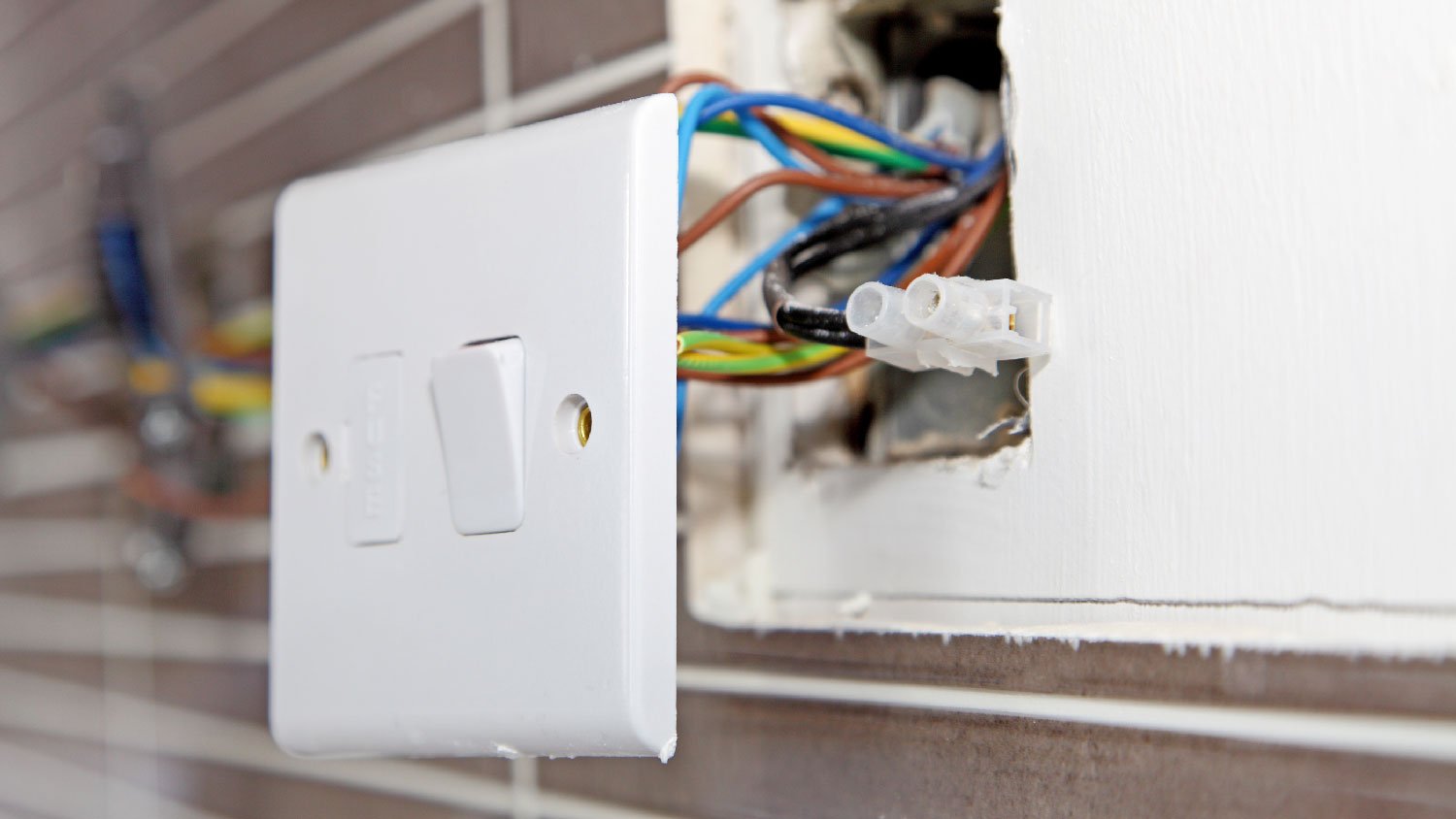
Whether you’re shopping for a new home or simply doing a safety check on your current place, learn what factors influence an electrical inspection cost.
Find out more about this hot topic


A hot light switch can be a sign of an electrical problem.
Hot light switches should be repaired or replaced as soon as possible.
If you aren’t confident working with electrical fixtures, hire a pro.
Walking into a room and flipping on a light switch is a matter of habit, but if you flip your light switch on and ask yourself, “Why is my light switch hot?” there could be a serious electrical problem. Hot light switches can be caused by several different issues, and it’s critical to identify and repair the problem before you run the risk of an electrical fire or other safety issues. As with any electrical problem, safety comes first—turn off power to the switch at the breaker when you encounter a hot light switch and call a licensed electrician if you aren’t experienced working with electrical fixtures. We break down some of the most common reasons for a hot light switch.
If the fixtures connected to the light switch are demanding more power than the switch can provide, the switch can get overloaded, which may cause it to heat up. Using bulbs that are a higher wattage than the switch is designed for, having too many fixtures or bulbs connected to a switch, or using the wrong kind of bulb can all cause an overloaded switch.
Find out how much power your switch is rated to provide, and only use fixtures and bulbs that won’t draw too much power. Try switching to low-wattage bulbs or adding another switch to support additional fixtures.
Age and regular use can cause light switches to go bad, leading to damaged components and potentially causing the switch to overheat. Older switches may not be able to handle the increased power demands of modern light fixtures, which can damage components or lead to shorts in the circuit.
It’s better to install a new light switch than to try to repair a damaged older switch. A new switch may have improved built-in safety measures and is less likely to lead to shorts, overloaded circuits, or fire risks.

An improperly wired light switch or a switch with damaged wiring can cause the switch to feel hot. If electricity isn’t being conducted safely through the wires as intended, the electrical current can cause heat or sparks, leading to a serious fire risk.
It’s safest to have a licensed electrician assess faulty wiring and repair it. The problem may be as simple as a loose connection, but is often a more complex issue that requires experience in safely rewiring the switch in accordance with electrical codes and safety measures.
The type of light switch you have can also contribute to your light switch feeling hot. Dimmer switches naturally emit a small amount of heat, especially when the bulbs on the circuit are at maximum brightness. However, a dimmer switch that’s noticeably hot to the touch should be investigated—the circuit may be overloaded or it may have damaged components.
Call a licensed electrician to determine if your dimmer switch is overloaded or has faulty components if it’s hot to the touch.
If you don’t have the necessary knowledge and experience to replace or fix a light switch, call a local electrician to evaluate the problem and safely make any necessary repairs. A hot light switch can indicate a serious electrical problem, and an experienced, licensed pro can troubleshoot the cause and properly fix it, keeping you and your home safe.

Keeping your home’s electrical system up-to-date with regular inspections and necessary updates to older components can help you avoid electrical problems like hot light switches. Newer fixtures and components may have additional safety measures to prevent shorts, overloads, and potential fire risks. It’s also important to know how much power a switch can provide and only use bulbs and fixtures within that limit.
From average costs to expert advice, get all the answers you need to get your job done.

Whether you’re shopping for a new home or simply doing a safety check on your current place, learn what factors influence an electrical inspection cost.

How much does adding an electrical outlet cost in Columbus? Get details on average pricing, permit needs, and what affects the total cost.

How much does rewire house cost in Columbus? Learn the major factors that impact the price and how it can help increase your home's value.

Selecting the right wire size helps your electrical system run safely and efficiently. Find out the correct wire size for 100-amp service panels.

If your home contains original aluminum wiring, you may want to take action to avoid danger. Learn why aluminum wires are hazardous and how you can address these issues safely.

Ready to upgrade your front door and learn how to wire a doorbell? You may be able to handle this relatively simple DIY installation without an electrician.